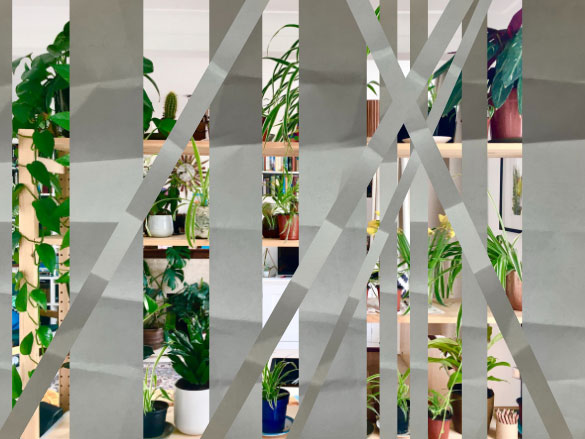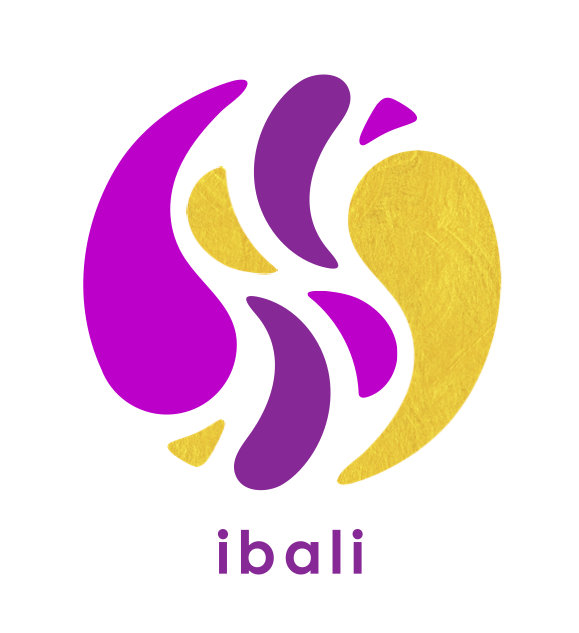You are here
Researching in the Open: what this means to the Ibali team
29 November 2022
by Alison Buckler

There is no space for storage in my home-office, a corner of the living room partitioned off by shelves of houseplants. Through the frame of the camera in work meetings it looks nice, tidy – calm, even: the greenery, the glimpse of bookshelves in the background. But unseen by colleagues, the floor is a bit chaotic. There are dozens of boxes and bags containing paper, tech equipment and craft materials: resources from workshops and research projects. Research ‘stuff’ that, in a previous, pre-Covid era, would be stored in tall cupboards in Milton Keynes. It’s essential for me to do my job, but it is bit of a mess.
I root around in the mess, trying to find a piece of flip-chart paper from the Ibali inception meeting in May. This was the first time the whole team of education researchers, storytelling facilitators and ethnographers from our AHRC-funded project had been together, face-to-face, in one place. We spent three days re-visiting conversations we’d started when we put the bid together in 2019, expanding them with insights from new members of the team.
One of the conversations was about our commitment to researching ‘in the open’. This is something that is instinctively important to us. In general, the term open research is used to emphasise the importance of academics sharing their processes, methods, data and outputs as widely and as accessibly as possible. It’s good practice, and as UKRI beneficiaries we have a responsibility to adhere to their open access guidelines and integrity principles, but we felt there was more to think about than this, more to do, more to ‘open’.
I finally find what I am looking for in a WH Smiths carrier bag under the desk. I hadn’t seen it because it was folded, not rolled up like the other pieces of flip-chart paper. I unfold it, read the scribbled sentences and triple-underlined words - criss-crossed by the creases - and attempt to pull the threads together into a coherent intention. So, what does researching in the open mean to us, why do we think it is important, and how do we plan to do it?
A key output of Ibali will be a collection of stories from young people and teachers in Nigeria, South Africa and the UK, sharing their understandings, experiences and perspectives on inclusion in education. But the stories themselves will not provide the answers to our research questions. In fact, for all the recent attention on storytelling in research, stories are rarely the answer to a research question.
Story research is different to other qualitative ways of generating knowledge; it is in itself a more ‘open’ way of thinking about learning. In Ibali we are not only interested in what often gets left out of research reporting (a more conventional way of thinking about open research), but also in what is left out of research when it is conceived in a less expansive way.
We hope and intend for the stories generated through the project to be thought-provoking and discussion-generating. But the analytical focus in Ibali is on the process of storymaking and storytelling. We have three ethnographers who are documenting and analysing what happens in story workshops and how knowledge is generated through telling stories. It is in this data, in these moments, that we will search for the answers to our research questions on what it means to be included or excluded in education.
Therefore, the Ibali team see researching in the open to mean:
An unfolding of the research process that aims to go beyond what is usually published or shared. Here we mean ‘open’ as a verb, to ‘unfold and spread out’ – to share how stories are made and shaped and share our understandings of how we as researchers influence, inspire and potentially inhibit storytellers’ creativity and expression in different contexts. By opening and unfolding the process of generating stories we aim to acknowledge the creases in the flip-chart paper. We won’t try to smooth them out, but critique what they contribute to our work.
An invitation. Here we mean open as in a ‘welcoming’ of others to contribute to the unfolding. We are working within but also outside academic spaces to engage those involved with all kinds of story research. Conventional understandings of open research position the researchers as ‘expert’, where transparency is intended to validate expertise. In contrast, we see our commitment to openness as inviting challenge, as well as collaboration. Our interest in transparency is to encourage ourselves and other story researchers to reveal what is ‘on the floor’ when creating stories, and not just what is seen on the screen. Even the mess, especially the mess.
.jpg)
